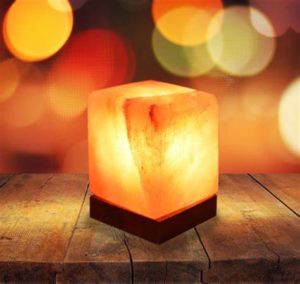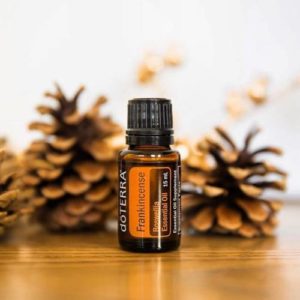By Dr. Alyssa Musgrove
Your digestive system, commonly referred to as your “gut,” contains both beneficial and harmful bacteria. These bacteria help metabolize the food we eat and assist in digestion, but they also play a larger role in our overall health. 
Countless research studies have shown that a healthy gut may positively influence your immune system, sleep, mood, and the activity of hundreds of your genes, while reducing the risk for sickness and disease.
Gut bacteria are an active and integrated part of the body and are heavily dependent on diet and vulnerable to lifestyle. The perfect balance should be approximately 85% good bacteria and 15% bad bacteria. If this ratio gets out of balance, it affects the body in a negative way. By consuming certain types of foods, called prebiotics and probiotics, you can help bring these ratios back into balance.
Prebiotics – Reach for the Fiber
Scientific literature indicates that increasing prebiotic fiber intake supports bone density, bowel movement regularity, weight management, immunity, brain health and digestive health.
Prebiotics are a type of non-digestible fiber compound found in fiber-rich foods. These prebiotic compounds go through the upper part of the gastrointestinal tract undigested since the human body cannot fully break them down. Once they pass through the small intestine, they reach the colon where they are fermented by the gut microflora. The fermentation process feeds beneficial bacteria colonies (including probiotic bacteria) and helps to increase the number of desirable bacteria in our digestive system.
The best prebiotic fiber is found in raw, whole foods. The following foods help add prebiotic fiber to your diet and improve your overall health:
- Raw or cooked onions
- Raw garlic
- Raw leeks
- Raw asparagus
- Green peas
- Snow peas
- Chickpeas
- Lentils
- Red kidney beans
- Yams
- Nectarines
- Persimmon
- Grapefruit
- Under-ripe bananas
- Couscous
- Raw jicama
- Raw cashews
- Raw pistachios
- Seaweed
- Raw dandelion greens
- Chicory root
There are many ways to begin incorporating these foods into your diet. Bananas that are not yet fully ripe (still green) are not soft and sweet tasting, but work well in smoothies or warmed up as a dessert. Raw asparagus or jicama can be thinly sliced and thrown in a salad for added crunch. Try using raw garlic in dips, homemade salsa, spreads and tomato salads.
In general, women should be getting 25 grams of fiber per day and men should be getting 35 grams per day. Most people, unfortunately, are only getting about 15 grams per day.
It is not always possible to eat enough foods rich in prebiotic fiber to nourish your beneficial bacteria. If you are looking for a healthy way to supplement or add to your fiber intake beyond whole foods, organic whole-husk psyllium is a simple, cost-effective way to do it. (Be careful not to increase fiber intake too rapidly, as it can cause bloating, constipation and gas.)
Probiotics – The Beneficial Bacteria
Probiotics are live beneficial bacteria that are naturally created by the process of fermentation in foods like sauerkraut, kimchi, kefir and yogurt. Probiotics are most commonly consumed in pill form, yet are also available as an added ingredient in health drinks, such as kombucha, and some foods, such as miso soup.
Probiotics are most commonly recommended by health professionals in supplement form to patients on antibiotics in an attempt to repopulate the colon with desirable bacteria after the course of antibiotics has wiped out both beneficial and undesirable bacteria. Besides antibiotics, your gut bacteria are also very sensitive to chlorinated water, antibacterial soap, alcohol (except red wine), smoking, poor sleep habits, emotional stress, sugar consumption, environmental pollution and agricultural chemicals.
Fermented foods are the best way to consume probiotics and achieve optimal digestive health — two tablespoons per day is ideal. Apple cider vinegar is a great source of healthy acids that support the function of probiotics and can easily be added to salad dressing or beverages. You can also reach for traditionally-made fermented foods including various pickled fermentations of cabbage, turnips, eggplant, cucumbers, carrots and okra. If you choose to drink kombucha or kefir, be sure to choose a version without high amounts of added sugar.
If you regularly eat fermented foods that have not been pasteurized (pasteurization kills naturally occurring probiotics), your gut bacteria will thrive. If you do not eat fermented foods or drinks, taking a high quality probiotic supplement is recommended. But, keep in mind, supplement quality counts. The bacteria in probiotic supplements are only effective if they are alive. Probiotic supplements will be ineffective if the bacteria are killed by time, heat or stomach acid.
Getting prebiotic fiber and probiotic bacteria from real whole foods is always going to be your best option. Supplementation should not take priority over eating a balanced, healthy diet. If you are interested in supplementing with a quality probiotic, contact our office. We carry supplements from highly-researched, provider-based companies only.
Pathways to Healing specializes in holistic chiropractic care. Dr. Alyssa Musgrove draws on a variety of techniques, including chiropractic, kinesiology, nutrition, food allergy testing and lifestyle counseling to assist clients in achieving optimal health and wellness in one setting. Pathways to Healing is located at 1022 Founders Row, Lake Oconee Village, Greensboro. The office can be reached at 706-454-2040.








